Workshops
Learn how to make a full-cloth case binding in this two-part virtual hands-on workshop for all skill levels. Materials kit provided!
There are no available registration dates at this time.
Registrations made after Nov 1 may not receive kits in time for class. The sessions are recorded and are available for a limited time post- sessions.
Note: This workshop will be held in a live, online format utilizing the Zoom platform.
Class meets Saturday & Sunday, Nov 11 & 12 from 10am-5pm ET.
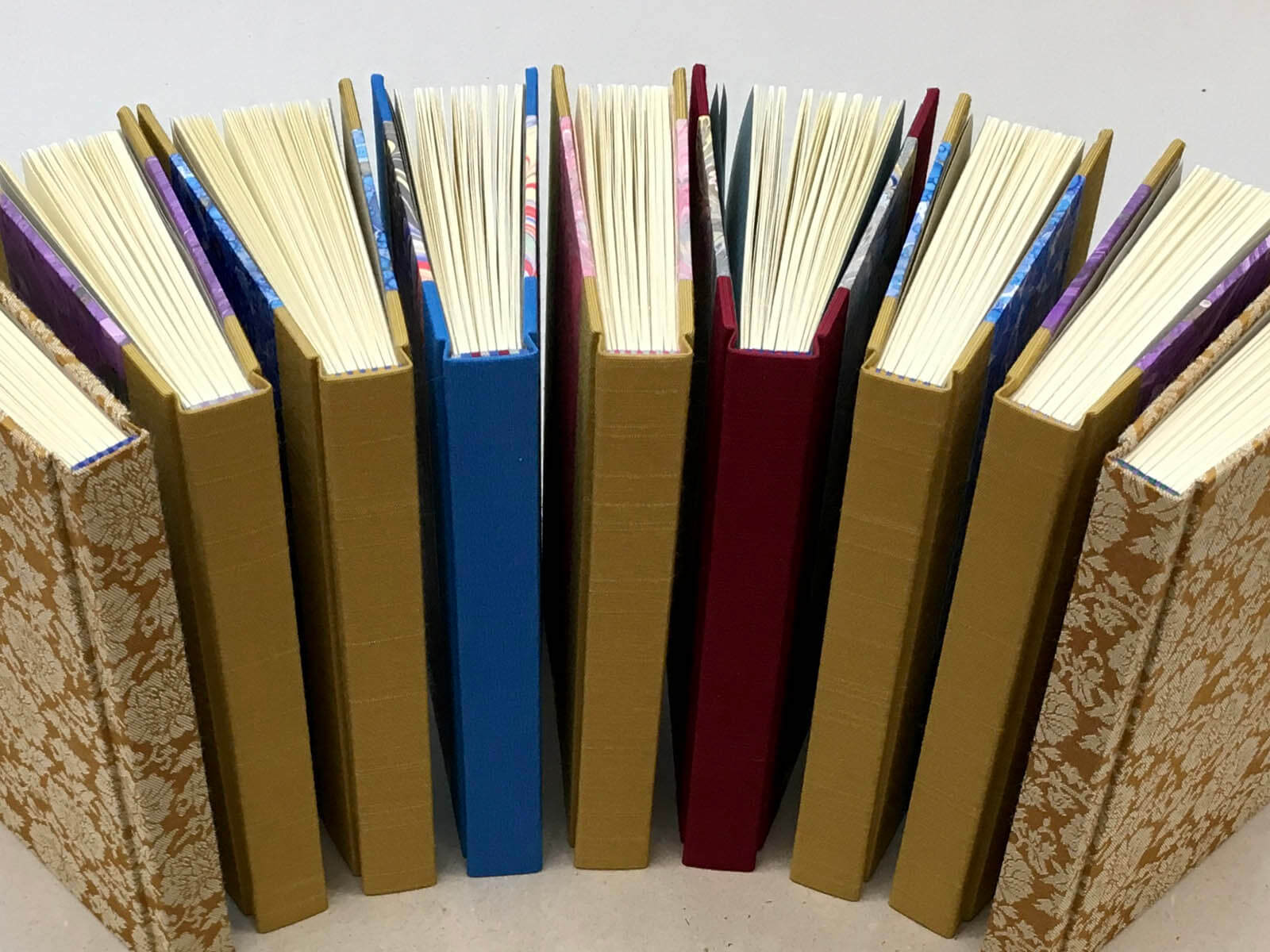
Case bindings proliferated under the mass production of books in the 19th century and remain a foundational bookbinding structure with contemporary bookbinders and artists. In this workshop, students will learn how to make their own case binding from a kit provided by the instructor, focusing first on the preparation and sewing of the text block, and then on making the hard-cover case of the book. In the last unit, students will join the two components of the structure (the text block and the case) by “casing in” their bindings. Workshop participants will come away from the class with a finished book of their own, references and samples of materials to source for future projects, and instructions with which to replicate the process.
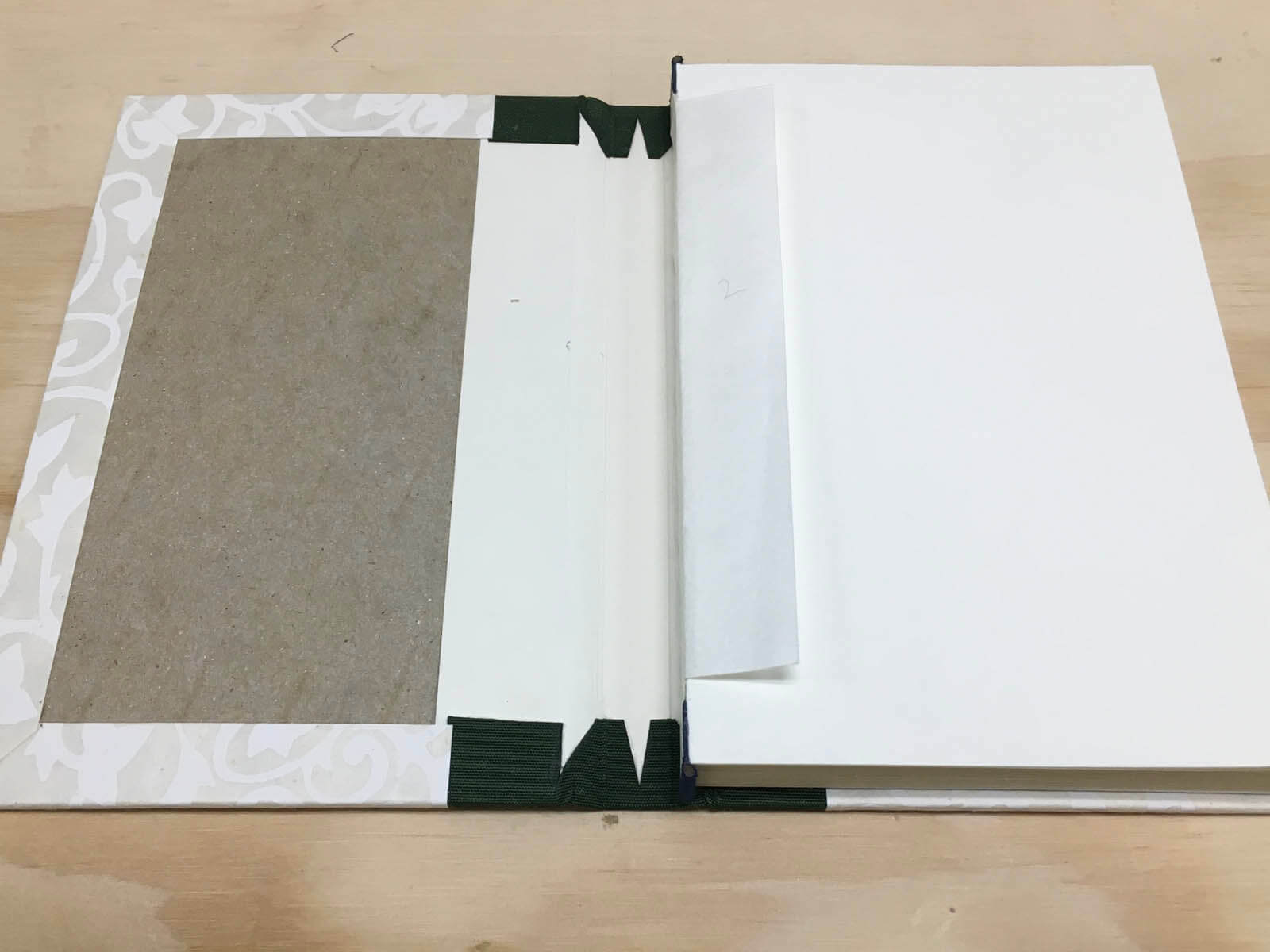
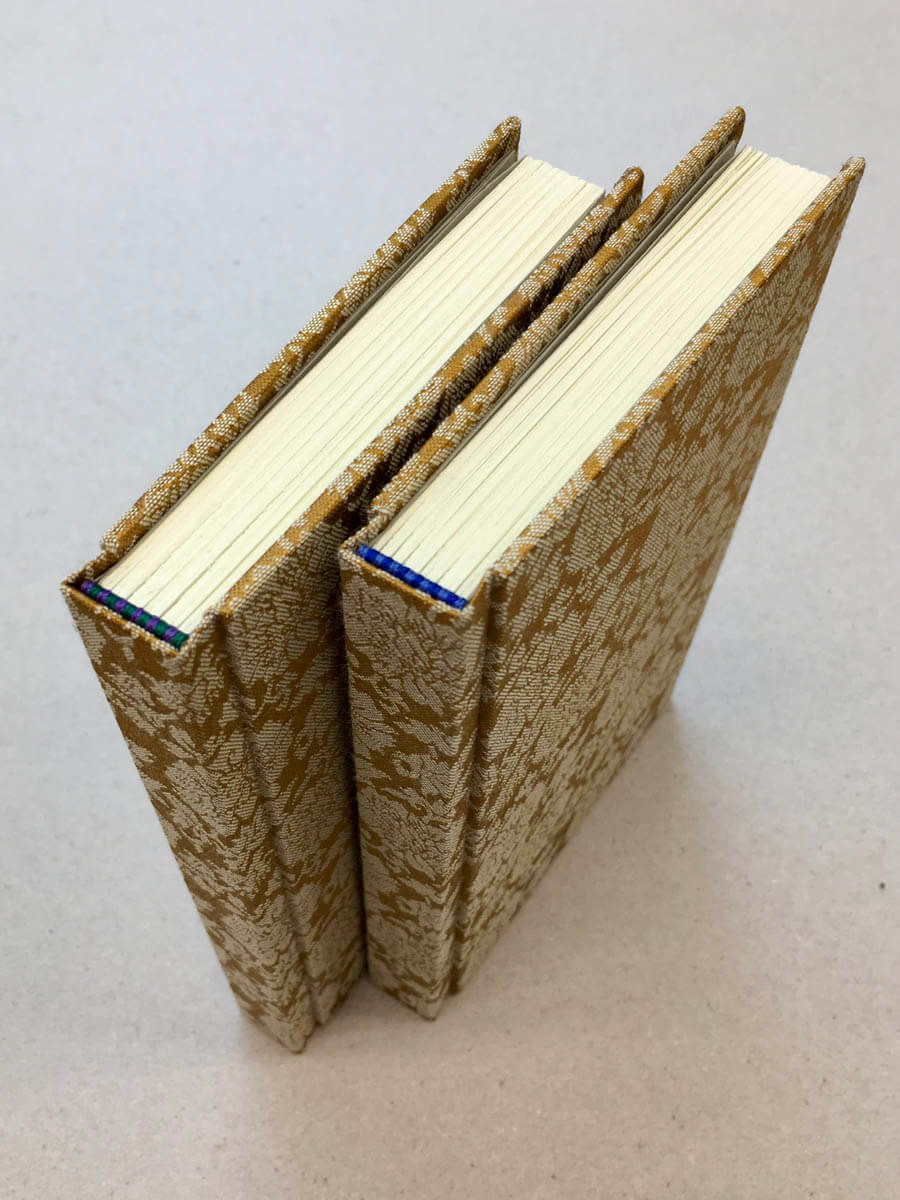
Adventurous beginners, intermediate, and advanced binding students are welcome! Class participants should have previous experience with binding books (particularly: sewing multiple sections together), covering the book board with cloth and/or paper, and identifying grain direction in paper.
Each student will receive 1 kit containing the following materials for a 4×6” case binding:
- 6 sections (4 folios each) from 70lbs Mohawk Superfine paper
- 2 pairs of end sheets from Hahnemühle Ingres paper
- 1 length 18/3 bookbinding thread
- 1 bookbinding needle
- 1 piece card-stock (from which to make a punching template)
- 1 piece 10-pt. card-stock (from which to make the case spine)
- 1 piece scrap board
- 2 pieces .059″ Eska Graphic Board
- 1 piece book cloth
- 1 5/8” turn-in spacer
- Sekishu lining tissue
- Mohawk Superfine off-cuts
- Machine-made end-bands
- Wax paper
- Newsprint/waste paper
Students will need:
- 1 pencil (sharp) and 1 eraser
- 1 self-healing mat
- 1 awl or pin-tool
- 1 flat metal ruler
- 1 metal triangle (45°/45°/90°)
- 1 bone or Teflon folder
- 1 pair of sharp pointed scissors, capable of precise cuts
- 1 Olfa knife, X-Acto knife, or scalpel (as preferred)
- 8-10 spare blades with which to keep the working knife sharp
- 1-2 glue brushes (1 smaller one to work the spine and 1 larger one to paste up the boards and case-in)
- 1 pair knitting needles (any US size 8 to 10.5 should work – 5mm to 7mm diameter – to set the joint of the new case during drying if you do not have a nipping press and brass-edge boards on hand)
- 1-2 flat boards under which to cry the book (book boards or cutting boards or a couple of heavy books will all do)
- PVA glue (or another equivalent liquid adhesive)
- A few book weights (or: a dense dictionary, a Tupperware container filled with marbles, a brick wrapped in paper, etc.)
Optional tools (for students who already have these on hand or for students who are looking to expand their tool-kit—but by no means indispensable to the class):
- 1 pair of small flat pliers to enhance grip strength while sewing (only if needed by the student)
- 1 piece of beeswax for waxing book thread
- 1 rubber cement pick-up eraser
- 1-2 brass 5/16″ spacers
- 1 pair of dividers
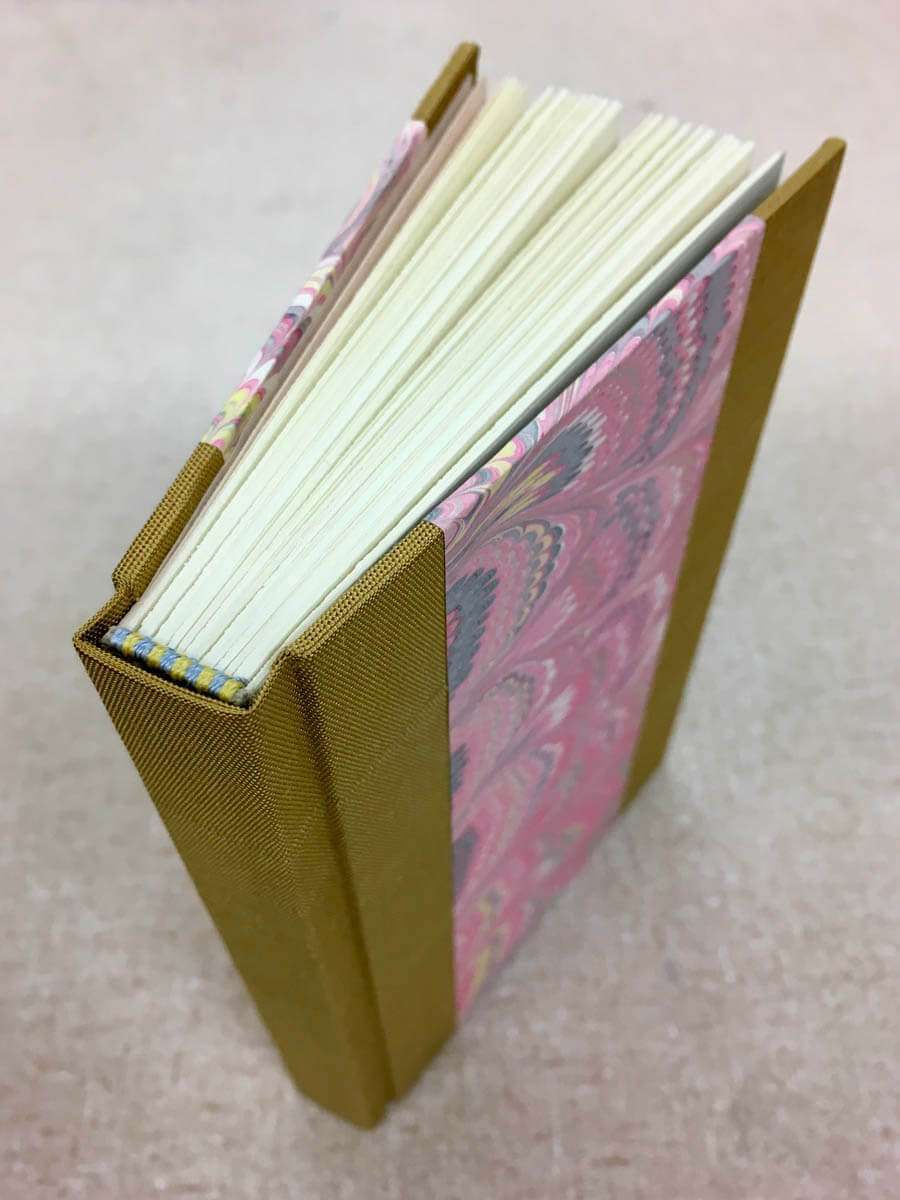
All images copyright Suzanne Glemot.
Share This
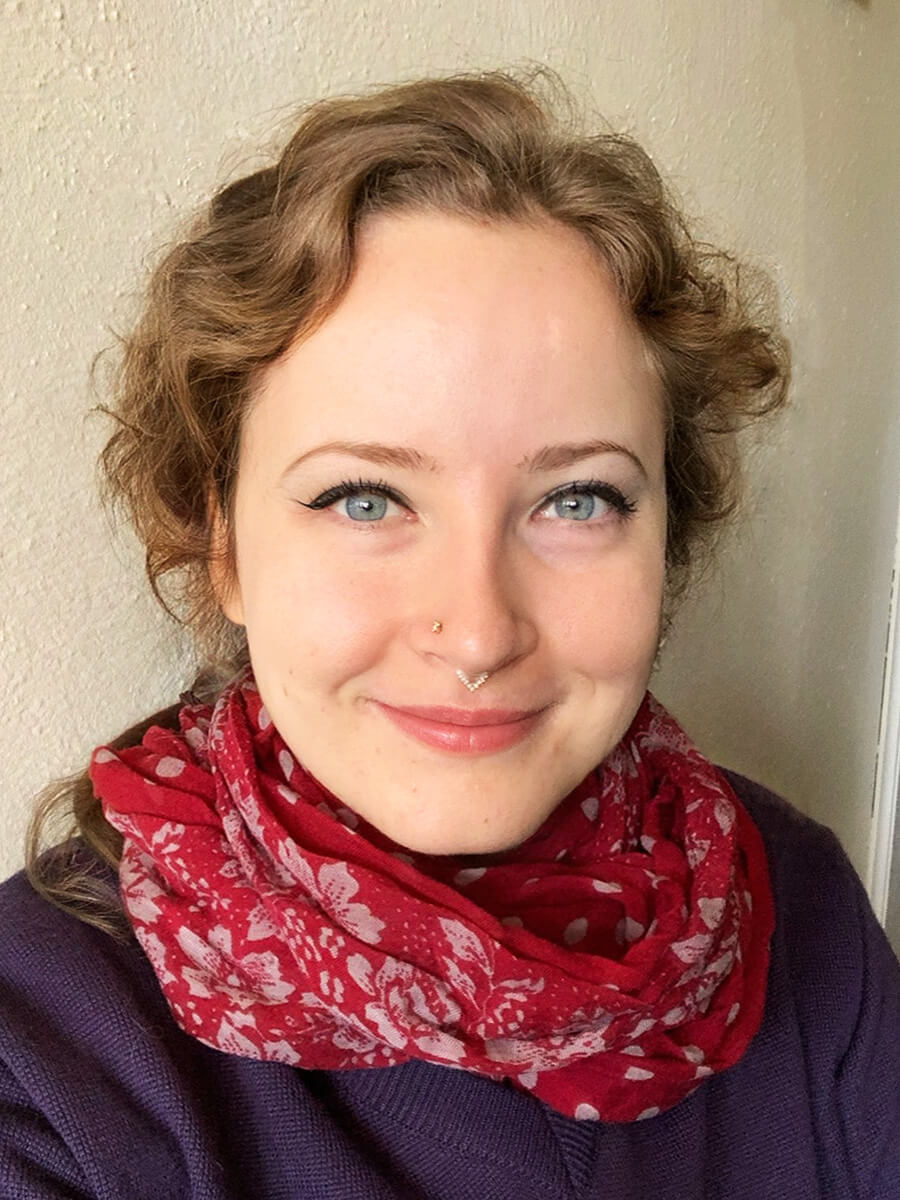
Instructor: Suzanne Glémot
Suzanne Glémot is an artist and bookbinder living and working in Iowa City, IA. She earned her MFA from the University of Iowa Center for the Book, where she studied bookbinding and letterpress printing. Working in artist books, boxes, and prints, her pieces explore memory as it relates to language and place.

